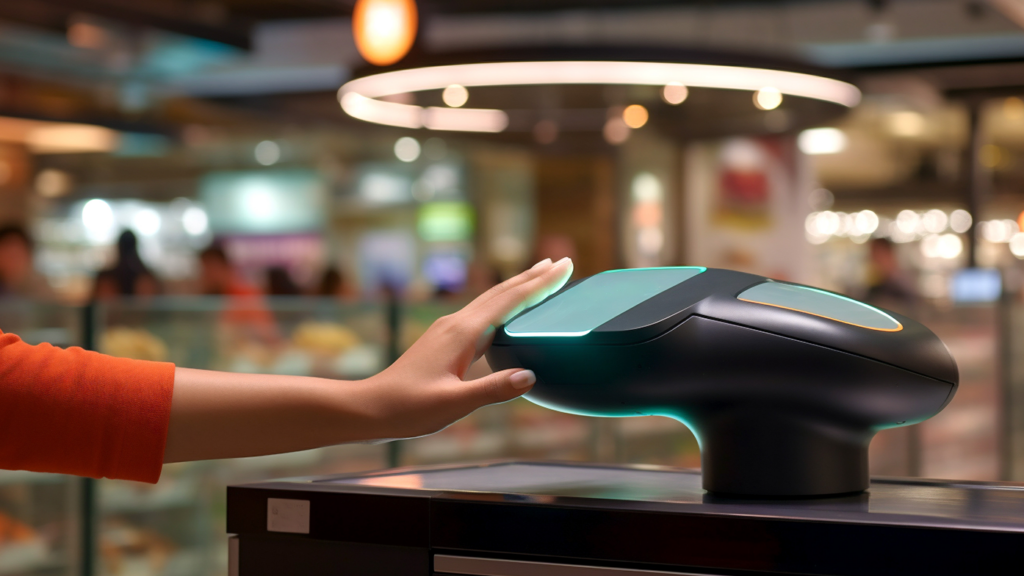Biometric systems are making their way into the retail space and are gaining popularity as an authentication method for digital features online and in-store. As retailers enhance the customers’ seamless shopping experience, using facial recognition or fingerprints has expedited their transactions. Apple’s release of fingerprint recognition in the iPhone 5S in 2013 and Face ID in the iPhone X in 2017 were the earliest consumer products to use biometric technology successfully. This feature has become widely used across phone manufacturers as consumers adapt to using their identity as a built-in firewall. As of 2022, 80% of smartphones now have biometrics enabled.
Enhanced Security Options Across Multiple Segments
One of the key benefits of implementing biometrics in a retail environment is the enhanced security it provides to prevent fraud and deter shoplifting. Retailers lose nearly $100 billion annually from return fraud, coupon stacking and bots. Fingerprint and facial recognition technology ensure that people are who they say they are, significantly reducing the risk of identity theft and unauthorized access to consumer information.
Aside from consumer tech products, travel and hospitality brands have led the way for biometric implementation. The Walt Disney World Resorts has been using fingerprint technology (FPS) for its guests as a safety countermeasure to prevent ticket fraud. Most families’ investment in a week-long vacation at Disney World precipitated the need for identity insurance. Customers can opt-in to FPS as part of their Disney Experience, which uses their fingerprint scan as a digital tapstyle to enter its hotels, restaurants and theme parks.
The most widely recognized representation of biometrics is CLEAR, an identity verification company that targets airline passengers. CLEAR uses facial, iris and fingerprint biometrics to ensure that members have smooth transitions at airport security checkpoints. The technology has also been implemented at concert arenas and sports stadiums nationwide. Later this year, the company will launch CLEAR pods, passerby scanning kiosks that will quickly verify members’ identity using facial image recognition.
As consumer adoption becomes the norm, retailers have integrated biometrics into their omnichannel strategies. Contactless payments have seen the most traction, leveraging mobile-friendly tactics to implement payment technology advances, like palm scanning. Palm scanning uses hand geometry to identify individuals based on the shape and veining of their hands. It was first used as a point-of-entry protocol at the 1996 Olympics and is now a feature in the payment technology facilitated by Amazon One. Amazon One is a contactless service that lets you use your palm to pay, enter, or identify yourself. The service will roll out across the brand’s grocery locations and has been adopted by top-tier airport retailers in Atlanta, Los Angeles and New York and by alcohol vendors at sports arenas to vet a buyer’s age for alcohol purchases.
Just the Facts
Consumers have come to rely on biometric authentication as a point of entry security measure. The multi-factor authentication expedites purchasing decisions as consumers no longer need to fumble for cash or cards or remember complex passwords for their transactions. Among online shoppers, 60% of fingerprint scan users use this method, compared to 58% that use facial recognition to validate purchases more than once a week.
Only some people are on board. Some consumers concerned with privacy have grown wary of how brands use their biometrics data. According to Security Magazine, 28% of consumers trusted that their biometric data–collected by face scans, voice scans, or fingerprints–was secure in 2022, a number that has fallen to 5% today.
Although regulations vary state by state, the Federal Trade Commission (FTC) proactively issued a policy warning that the increasing use of biometric technologies could impact consumer privacy, data security concerns and the potential for bias and discrimination. To date, biometrics language has been added to several existing state legislation, most notably in Illinois, Texas, New York, Vermont, and Washington.
It’s important to note that the use of biometrics is still evolving. Though there are some concerns about privacy and security, innovations are underway to ensure that data collection is handled responsibly and aligns with consumer convenience.

 Anjee Solanki
Anjee Solanki

 Aaron Jodka
Aaron Jodka Nicole Larson
Nicole Larson
